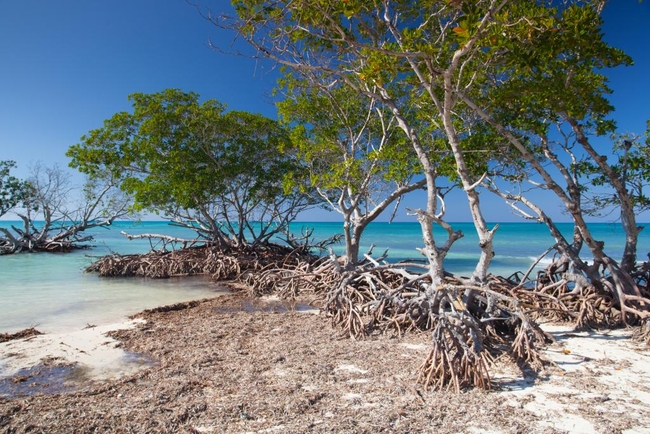The Cuban Coast: 3,000 Miles of Climate Change Mitigation
startupcuba | Monday, 8 March 2021 | Click here for original article

Most readers are familiar with the 90 miles that represent the distance between Cuba and Florida. But you might not know that Cuba has over 3,000 miles of coastline and more than 4,000 islets and keys in its archipelago. It is home to one of the largest coral reefs in the world.
The Cuban archipelago boasts a magnificent marine biodiversity. It is home to various fish species as well as some endangered migratory species, such as marine sea turtles. A combination of a lack of new coastal developments, low use of fertilizers, tight controls on commercial fishing, the establishment of protected areas and a smaller human footprint have meant that Cuba’s coasts are relatively much cleaner than others in the area and are a mecca for divers and snorkelers.
Over the past decades, many stakeholders such as the Cuban Center for Coastal Ecosystem Research, have been monitoring and protecting these areas using an integrative management approach that supports both the natural environment and local communities.
The Ministry of Science, Technology and Environment has prioritized coral reef research but a lack of resources has been an ongoing challenge. Furthermore, a combination of climate change, pollution, overfishing, and sedimentation have contributed to the deterioration of parts of the coral reefs.
Despite these continuous challenges, coastal conservation has been prioritized, both by Cuban institutions and through international collaborations.
In February 2020, the European Union, through the Global Alliance for Climate Change, provided a $4M fund for a program named “Resiliencia Costera” or “Building coastal resilience in Cuba through natural solutions for adaptation to climate change”.
This program is led by the Environment Agency of the Ministry of Science, Technology and Environment and implemented by the United Nations Development Programme. It aims to strengthen the ability of vulnerable coastal communities and sectors to adapt to climate change. One way it plans to do this is through the restoration of mangrove ecosystems.
Increasing sea levels, storm events and more put coastal communities at high risk of water contamination and coastal degradation. Alarmingly, 119 coastal human settlements have been identified at extreme risk of climate change impact and and 21 are predicted to disappear by the year 2100.
The program even has a short video on YouTube which features interviews with various Cuban scientists. As Colonel Luis Ángel Macareño explains: “This project is important because it supports all the tasks that we have been developing: we will continue to strengthen and implement our disaster risk reduction management plans nationwide.”
Since 2017, Cuba has adopted an integrated national policy for mitigating climate change, commonly known as Tarea Vida. The program specifies progressive investments in the short- (by 2020), medium- (by 2030), long- (by 2050) and very long (by 2100) terms.
The adoption of climate change resiliency strategies — including coastal conservation, will not only protect the lives, dwellings and lands of coastal communities but also their sources of work and livelihood. National industries including the fishing, agriculture and tourism sectors are all vulnerable to climate shocks.
Over the course of the past year and with the impacts of the COVID-19 pandemic, Cuba has suffered from a food crisis and a shrinking of its economy. Given this context, a post COVID-19 recovery will necessitate an integrative approach that not only addresses climate change resiliency but also includes strategies for protecting people’s livelihoods.






